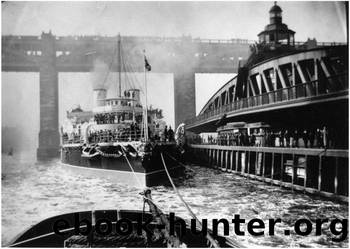William Armstrong by Henrietta Heald

Author:Henrietta Heald [Henrietta Heald]
Language: eng
Format: epub
ISBN: 9780857160355
Publisher: McNidder and Grace Limited
Published: 2012-12-15T00:00:00+00:00
Armstrong had been attracted to the site of Cragside not only by its natural beauty but also by the potential it offered for the use of water power. Consequently, he lost no time in damming the nearby Debdon Burn and Black Burn to create reservoirs, eventually five in all, from which water could be piped all over the estate.10 Crucially, the artificial lakes also provided heads of water that could be harnessed to drive hydraulic machinery. The water from Debdon Lake powered a turbine which operated the estate sawmill, and it was here that Armstrong carried out his first experiments in the production of hydroelectricity.
Tumbleton Lake was formed by damming the Debdon Burn lower down, creating a head of water to serve the pump house of 1866, where pumps driven by a hydraulic engine provided water to Cragside house. Meanwhile, the main course of Black Burn was dammed to form the largest of the five lakes, which was used for boating and fishing as well as the provision of hydraulic power to Cragend Farm. Most impressive of all, two more lakes were created by diverting water from Black Burn high up on the moors and channelling it through a canal, a pipe, an open wooden flume, and a stream to feed two new lakes in the area known as Nellyâs Moss. The lower lake provided a head of water to drive all the hydraulic machinery in the house as well as the cascades in the rock garden.
By the time the Sopwiths visited Cragside in November of 1870, radical changes to the property were already under way. For the first time, Thomas and Annie were able to travel all the way from Newcastle by rail, a journey of two and a half hours, part of which took them along the newly opened line from Scots Gap to Rothbury. They were met at the station by Johnny Watson, Armstrongâs nephew, who drove them to their destination in a wagonette.
âA single glance at the house suffices to show the extensive additions now being made to it, viz. an entirely new dining room, drawing room, lobby, Turkish and other baths, etc.,â wrote Sopwith in his diary. âThese are now from 10 to 15 feet from the ground and were, during our stay, fully explained to us by Sir William. The arrangements for warming and ventilating appear to be most complete, and when finished the house will certainly be replete with comfort as well as elegance, for nothing can exceed the scientific skill brought to bear upon all the building, or it may rather be said upon all the engineering appliances by Sir William and the good taste for economic and suitable matters in which Lady Armstrong eminently excels.â
Based on the idea of ancient Roman baths and introduced to Britain in the 1850s, Turkish baths were all the rage at the time. (In 1872 Armstrongâs cousin Addison Potter, who was mayor at the time, set up a Turkish bath company in Pilgrim Street, Newcastle, whose directors included the prosperous local coal-owner John Joicey.
Download
This site does not store any files on its server. We only index and link to content provided by other sites. Please contact the content providers to delete copyright contents if any and email us, we'll remove relevant links or contents immediately.
Hit Refresh by Satya Nadella(8983)
When Breath Becomes Air by Paul Kalanithi(8249)
The Girl Without a Voice by Casey Watson(7766)
A Court of Wings and Ruin by Sarah J. Maas(7529)
Do No Harm Stories of Life, Death and Brain Surgery by Henry Marsh(6829)
Shoe Dog by Phil Knight(5055)
Hunger by Roxane Gay(4820)
The Rules Do Not Apply by Ariel Levy(4772)
A Higher Loyalty: Truth, Lies, and Leadership by James Comey(4768)
Everything Happens for a Reason by Kate Bowler(4601)
Tuesdays with Morrie by Mitch Albom(4565)
The Immortal Life of Henrietta Lacks by Rebecca Skloot(4437)
Millionaire: The Philanderer, Gambler, and Duelist Who Invented Modern Finance by Janet Gleeson(4278)
How to Change Your Mind by Michael Pollan(4244)
All Creatures Great and Small by James Herriot(4178)
The Money Culture by Michael Lewis(4008)
Man and His Symbols by Carl Gustav Jung(3995)
Elon Musk by Ashlee Vance(3971)
Tokyo Vice: An American Reporter on the Police Beat in Japan by Jake Adelstein(3890)
